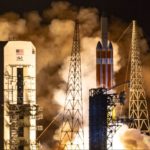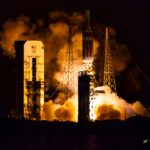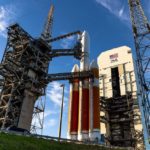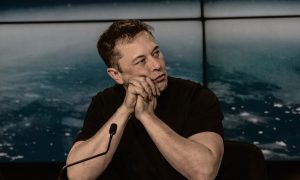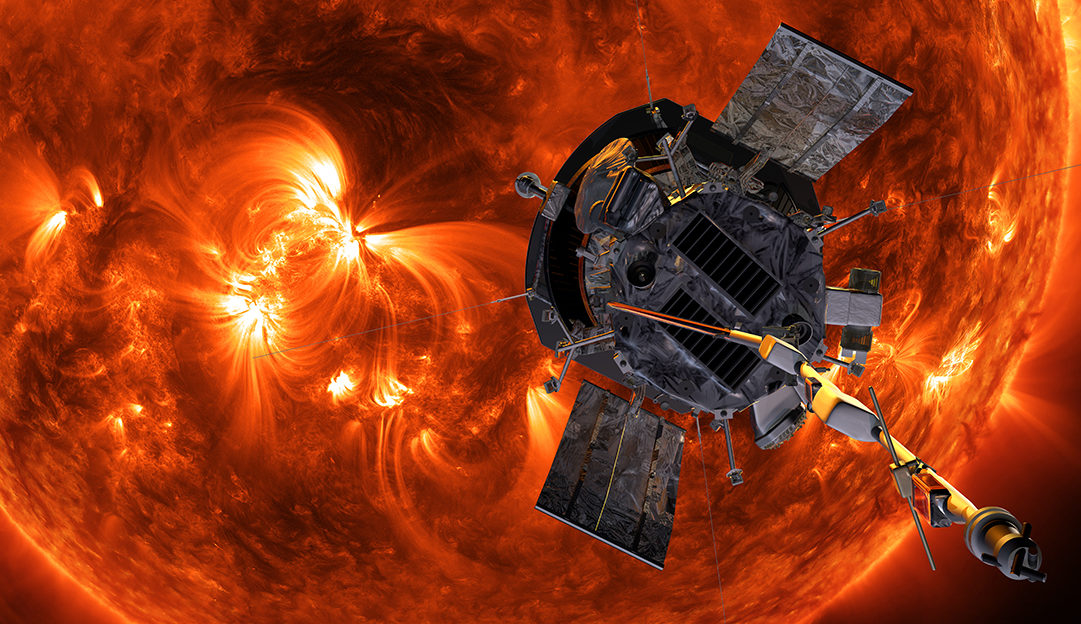

News
NASA’s Parker Solar Probe takes first picture inside the Sun’s atmosphere
Traveling at the record-breaking speed of 213,200 miles per hour, NASA’s Parker Solar Probe came within 15 million miles of the Sun’s surface, completing its first solar encounter phase and rewarding scientists with the first picture ever taken from within our star’s atmosphere.
Launched on August 12, 2018 in a United Launch Alliance Delta IV Heavy rocket from Cape Canaveral, Florida, the probe will help provide answers to some of the mysteries of our Sun. In particular: Why is the atmosphere hotter than the surface? Why is the solar wind continuously accelerated? These are important questions considering the Sun is both essential for life and a potential danger through its magnetized materials’ interference with our satellites, electronics, and astronauts in orbit. Scientists on the craft’s team presented the initial set of new data from its encounter on December 12th during the 2018 American Geophysical Union meeting.
The Parker Probe’s team began downloading data from its journey on December 7th this year, but the actual Sun passage took place about a month earlier, from October 31st through November 11th. The delay was caused by the nature of the Sun itself – as a wide band radio source, communications are not possible anytime a craft is in front, behind, or to the side of it.
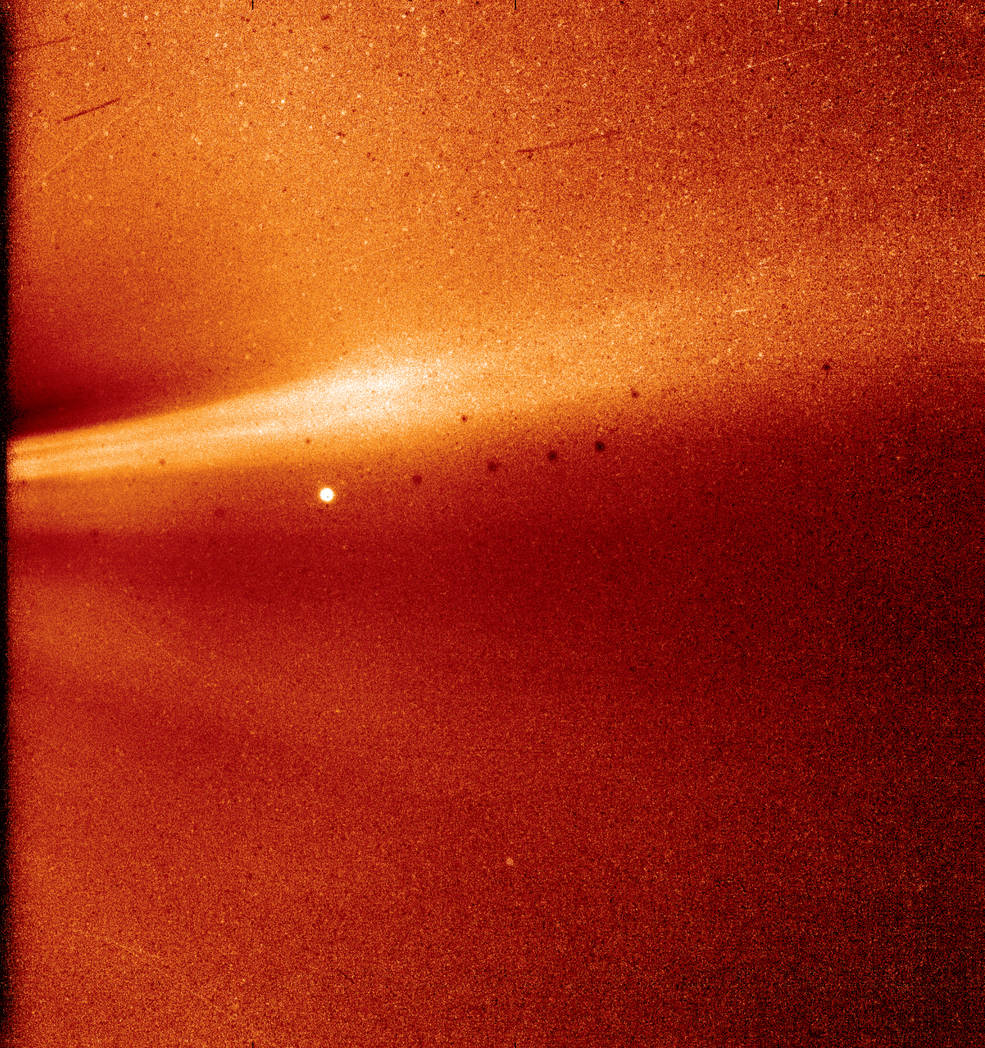
During the probe’s approaches, scientists rely on one of four beacons installed that signal the craft’s status. Mission controllers at the John Hopkins University Applied Physics Labs (JHUAPL) received the “A” beacon at 4:46 pm EST on November 7, 2018, indicating that the probe was operating well and collecting data. Also, more data from the probe’s initial encounter will be forthcoming next year following its next approach.
This latest visitor to the Sun was named after physicist Eugene Newman Parker, best known for his mid-1950s theories about solar wind and the Sun’s atmosphere being hotter than the surface itself, and the craft will likely be one more data point complimenting his predictions. Since the Parker Probe’s mission will encounter our star in ways never done before, its science team is not quite sure of what to expect.
“Parker is an exploration mission — the potential for new discoveries is huge,” Nour Raouafi, a Parker Solar Probe project scientist at the JHUAPL in Laurel, Maryland, was quoted on the issue. The craft will also pass by Venus a total of seven times and will come within 3.8 million miles of the Sun at its closest of 24 planned approaches.
- The Parker Solar Probe prior and during launch on August 12, 2018 in a United Launch Alliance Delta IV Heavy rocket from Cape Canaveral, Florida. | Credit: Tom Cross/Teslarati
- The Parker Solar Probe prior and during launch on August 12, 2018 in a United Launch Alliance Delta IV Heavy rocket from Cape Canaveral, Florida. | Credit: Tom Cross/Teslarati
- The Parker Solar Probe prior and during launch on August 12, 2018 in a United Launch Alliance Delta IV Heavy rocket from Cape Canaveral, Florida. | Credit: Tom Cross/Teslarati
- The Parker Solar Probe prior and during launch on August 12, 2018 in a United Launch Alliance Delta IV Heavy rocket from Cape Canaveral, Florida. | Credit: Tom Cross/Teslarati
The Parker Solar Probe prior and during launch on August 12, 2018 in a United Launch Alliance Delta IV Heavy rocket from Cape Canaveral, Florida. | Credit: Tom Cross/Teslarati
Figuring out what the actual underlying physics of the Sun are is a challenge for scientists studying its activity. When observing the surface changes, the variations seen are difficult to classify as being caused by either the star’s activity or its rotation due to how fast it moves. The speed of the Parker Probe will allow it to nearly match the Sun’s rotational speed, one revolution per 27 days as viewed from Earth, meaning it will hover over one area for a short amount of time.
While there, it will be able to specifically collect data about activity caused by the Sun itself, thereby enabling scientists to revise their models accordingly. To collect data surrounding these questions, the probe was given a thermal heat shield that can withstand the 2,500 degrees Fahrenheit temperatures it will be exposed to while maintaining a mid-80s F temperature for its instruments.
In addition to the Parker Probe’s historic photo and data, NASA has been on a roll with milestones and discoveries this year. Launched in 1977, the Voyager 2 spacecraft became the second human-made object to enter interstellar space as it left our solar system on November 5th. The first was Voyager 1 when it left on August 25, 2012. NASA also landed its InSight craft on the surface of Mars on November 26, 2018, and several photos have been returned from it since, including a lander “selfie“. That mission had a second milestone with it via two CubeSats named Mars Cube One (MarCO), successfully demonstrating the use of tiny satellites in deep space. The satellites were able to relay InSight’s landing event data to its team much quicker than would be been possible with other orbiting satellites, and they even sent back a picture of the red planet as they passed by and continued into their long orbit around the Sun.
Watch the below video for more on the Parker Solar Probe’s mission:
News
Tesla cleared in Canada EV rebate investigation
Tesla has been cleared in an investigation into the company’s staggering number of EV rebate claims in Canada in January.

Canadian officials have cleared Tesla following an investigation into a large number of claims submitted to the country’s electric vehicle (EV) rebates earlier this year.
Transport Canada has ruled that there was no evidence of fraud after Tesla submitted 8,653 EV rebate claims for the country’s Incentives for Zero-Emission Vehicles (iZEV) program, as detailed in a report on Friday from The Globe and Mail. Despite the huge number of claims, Canadian authorities have found that the figure represented vehicles that had been delivered prior to the submission deadline for the program.
According to Transport Minister Chrystia Freeland, the claims “were determined to legitimately represent cars sold before January 12,” which was the final day for OEMs to submit these claims before the government suspended the program.
Upon initial reporting of the Tesla claims submitted in January, it was estimated that they were valued at around $43 million. In March, Freeland and Transport Canada opened the investigation into Tesla, noting that they would be freezing the rebate payments until the claims were found to be valid.
READ MORE ON ELECTRIC VEHICLES: EVs getting cleaner more quickly than expected in Europe: study
Huw Williams, Canadian Automobile Dealers Association Public Affairs Director, accepted the results of the investigation, while also questioning how Tesla knew to submit the claims that weekend, just before the program ran out.
“I think there’s a larger question as to how Tesla knew to run those through on that weekend,” Williams said. “It doesn’t appear to me that we have an investigation into any communication between Transport Canada and Tesla, between officials who may have shared information inappropriately.”
Tesla sales have been down in Canada for the first half of this year, amidst turmoil between the country and the Trump administration’s tariffs. Although Elon Musk has since stepped back from his role with the administration, a number of companies and officials in Canada were calling for a boycott of Tesla’s vehicles earlier this year, due in part to his association with Trump.
News
Tesla Semis to get 18 new Megachargers at this PepsiCo plant
PepsiCo is set to add more Tesla Semi Megachargers, this time at a facility in North Carolina.

Tesla partner PepsiCo is set to build new Semi charging stations at one of its manufacturing sites, as revealed in new permitting plans shared this week.
On Friday, Tesla charging station scout MarcoRP shared plans on X for 18 Semi Megacharging stalls at PepsiCo’s facility in Charlotte, North Carolina, coming as the latest update plans for the company’s increasingly electrified fleet. The stalls are set to be built side by side, along with three Tesla Megapack grid-scale battery systems.
The plans also note the faster charging speeds for the chargers, which can charge the Class 8 Semi at speeds of up to 1MW. Tesla says that the speed can charge the Semi back to roughly 70 percent in around 30 minutes.
You can see the site plans for the PepsiCo North Carolina Megacharger below.

Credit: PepsiCo (via MarcoRPi1 on X)

Credit: PepsiCo (via MarcoRPi1 on X)
READ MORE ON THE TESLA SEMI: Tesla to build Semi Megacharger station in Southern California
PepsiCo’s Tesla Semi fleet, other Megachargers, and initial tests and deliveries
PepsiCo was the first external customer to take delivery of Tesla’s Semis back in 2023, starting with just an initial order of 15. Since then, the company has continued to expand the fleet, recently taking delivery of an additional 50 units in California. The PepsiCo fleet was up to around 86 units as of last year, according to statements from Semi Senior Manager Dan Priestley.
Additionally, the company has similar Megachargers at its facilities in Modesto, Sacramento, and Fresno, California, and Tesla also submitted plans for approval to build 12 new Megacharging stalls in Los Angeles County.
Over the past couple of years, Tesla has also been delivering the electric Class 8 units to a number of other companies for pilot programs, and Priestley shared some results from PepsiCo’s initial Semi tests last year. Notably, the executive spoke with a handful of PepsiCo workers who said they really liked the Semi and wouldn’t plan on going back to diesel trucks.
The company is also nearing completion of a higher-volume Semi plant at its Gigafactory in Nevada, which is expected to eventually have an annual production capacity of 50,000 Semi units.
Tesla executive teases plan to further electrify supply chain
News
Tesla sales soar in Norway with new Model Y leading the charge
Tesla recorded a 54% year-over-year jump in new vehicle registrations in June.

Tesla is seeing strong momentum in Norway, with sales of the new Model Y helping the company maintain dominance in one of the world’s most electric vehicle-friendly markets.
Model Y upgrades and consumer preferences
According to the Norwegian Road Federation (OFV), Tesla recorded a 54% year-over-year jump in new vehicle registrations in June. The Model Y led the charge, posting a 115% increase compared to the same period last year. Tesla Norway’s growth was even more notable in May, with sales surging a whopping 213%, as noted in a CNBC report.
Christina Bu, secretary general of the Norwegian EV Association (NEVA), stated that Tesla’s strong market performance was partly due to the updated Model Y, which is really just a good car, period.
“I think it just has to do with the fact that they deliver a car which has quite a lot of value for money and is what Norwegians need. What Norwegians need, a large luggage space, all wheel drive, and a tow hitch, high ground clearance as well. In addition, quite good digital solutions which people have gotten used to, and also a charging network,” she said.
Tesla in Europe
Tesla’s success in Norway is supported by long-standing government incentives for EV adoption, including exemptions from VAT, road toll discounts, and access to bus lanes. Public and home charging infrastructure is also widely available, making the EV ownership experience in the country very convenient.
Tesla’s performance in Europe is still a mixed bag, with markets like Germany and France still seeing declines in recent months. In areas such as Norway, Spain, and Portugal, however, Tesla’s new car registrations are rising. Spain’s sales rose 61% and Portugal’s sales rose 7% last month. This suggests that regional demand may be stabilizing or rebounding in pockets of Europe.
-

 Elon Musk2 weeks ago
Elon Musk2 weeks agoTesla investors will be shocked by Jim Cramer’s latest assessment
-

 Elon Musk2 days ago
Elon Musk2 days agoxAI launches Grok 4 with new $300/month SuperGrok Heavy subscription
-

 Elon Musk4 days ago
Elon Musk4 days agoElon Musk confirms Grok 4 launch on July 9 with livestream event
-

 News1 week ago
News1 week agoTesla Model 3 ranks as the safest new car in Europe for 2025, per Euro NCAP tests
-

 Elon Musk2 weeks ago
Elon Musk2 weeks agoA Tesla just delivered itself to a customer autonomously, Elon Musk confirms
-

 Elon Musk1 week ago
Elon Musk1 week agoxAI’s Memphis data center receives air permit despite community criticism
-

 News2 weeks ago
News2 weeks agoXiaomi CEO congratulates Tesla on first FSD delivery: “We have to continue learning!”
-

 Investor's Corner2 weeks ago
Investor's Corner2 weeks agoTesla gets $475 price target from Benchmark amid initial Robotaxi rollout


